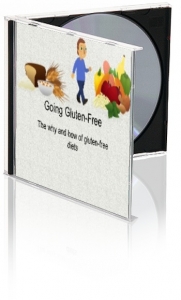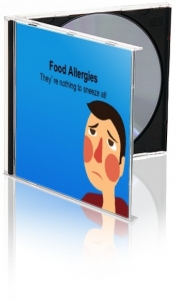Hot News: "Gluten-Free" Now Standardized on Food Labels
Well, it's official. The Food and Drug Administration (FDA) has finalized the definition of the term "gluten-free" and is regulating its use on food labels. No longer can manufacturers simply slap that label on their foods without following proper guidelines first.The Guidelines:According to the FDA, "the term 'gluten-free' now refers to foods that are either inherently gluten-free or foods that do not contain any ingredient that is:
- A gluten-containing grain (e.g. spelt wheat)
- Derived from a gluten-containing grain that has not been processed to remove gluten (e.g. wheat flour)
- Derived from a gluten-containing grain that has been processed to remove gluten (e.g. wheat starch), if the use of that ingredient results in the presence of 20 parts per million (ppm) or more gluten in the food"
Foods that contain an unavoidable bit of gluten must keep that presence to less than 20 ppm.Why Bother with Gluten Labeling?More than 3 million Americans have been diagnosed with celiac disease, an immune reaction to gluten. Countless others are facing gluten intolerances and sensitivities. This labeling guideline will make it easier for them to find foods that they can eat safely.Since there are no pharmaceutical cures or treatments for celiac disease, the only way to live with the disease comfortably is to avoid all gluten. These guidelines will help make that easier for everyone who cannot eat gluten.What's the Timeline for Implementation?Manufacturers will have one year to get everything up to speed and comply with the regulations.Do ALL Manufacturers Have to Follow These Guidelines?No. These guidelines only apply to FDA-regulated foods and dietary supplements.Note that this new rule does not apply to foods labeled by the United States Department of Agriculture (USDA) or the Alcohol and Tobacco Tax and Trade Bureau.Where Can I Learn More About the Gluten Labeling Rules and Celiac Disease?Get the details about the FDA labeling rules.Check out the latest gluten education materials.Review fast facts about food allergies and intolerances.Or read on for some gluten and celiac FAQs...
Gluten and Celiac FAQs:
What is Gluten?Gluten is a protein composite in many grains and grain-based foods. Sometimes gluten is also found in medicines, cosmetics, and even vitamin supplements.What is Celiac Disease? Celiac disease is a condition in which parts of the small intestine are damaged by an immune reaction to gluten. Those damaged sections of intestine can no longer absorb nutrients, which can lead to malnutrition and other diseases.Why Would Gluten Damage My Intestines? The bodies of people with celiac disease process gluten differently than they would if those people didn’t have celiac disease. Basically, when a person with celiac disease eats gluten, it triggers an immune response that damages the villi of the small intestine.Which Foods Typically Contain Gluten?
- Wheat
- Barley
- Rye
- Flour
- Pasta
- Beer
- Spelt
- Couscous
- Bread
Which Foods Can Be Good Gluten-Free Alternatives?
- Amaranth
- Quinoa
- Rice
- Soy
- Fruit
- Vegetables
- Meat
- Dairy
- Tofu
- Buckwheat
- Nuts
- Beans
- Seeds
As always, read the label carefully to make sure that you do not see a "may contains" statement where items were processed on the same machines with gluten-containing foods. Oats do not contain gluten but they are often processed with barley, which contains gluten.For even more resources, check out the Nutrition Education Store. Some allergy-related customer favorites include...





